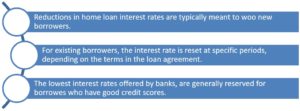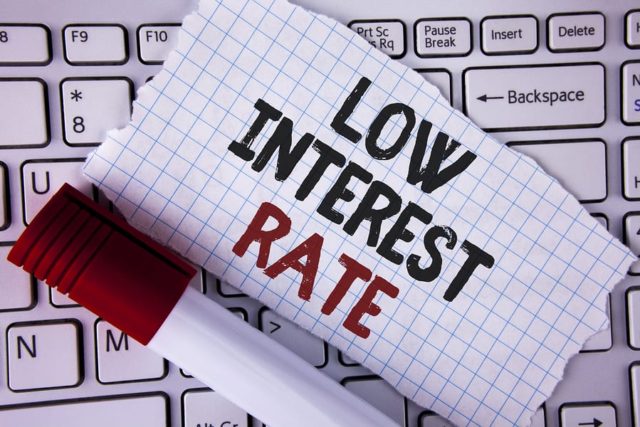While interest rates are currently at a 15-year-low level, borrowers need to be mindful of the terms and conditions of the concessions that lenders are offering
The Coronavirus pandemic has forced banks in India to bring home loan interest rates to a record 15-year low, in a bid to boost consumer sentiments, at a time when the economy has been severely hit and home buyers remain cautious over job security concerns. Nonetheless, attractive interest rates, along with reductions in property values, are prompting a large number of buyers to invest in real estate, which has shown a higher degree of resilience against the pandemic, as compared to other asset classes which crashed in the aftermath of the virus’ spread.
See also: Budget property in Panvel
Although there is a lot of talk around record low home loan interest rates, an inexperienced property buyer may not be aware of several key aspects of the borrowing process. Listed are some of the least talked about but most important aspects of the home loan borrowing process.
Will the low interest rate be available for all borrowers?
Whenever a bank slashes home loan interest rates, they are attempting to gain new customers. In other words, they are directly trying to sell a product to new customers amid stiff competition. While this does not mean that existing customers cannot avail of the benefit of the new and lower rates, they will have to go through a slightly different route to get the same.

Are home loan interest rates the same for everyone?
If a bank has brought down its interest rate to, say, 6.7%, borrowers tend to assume that they would get access to home loan at that interest rate. This assumption is not accurate. Amid increasing defaults, lenders apply various measures to lower risks, by scanning the borrowers’ profiles carefully. The lowest rates are generally meant for borrowers with good credit scores and borrowers who are able to finance a significant portion of the purchase from their own funds. Financing institutions also offer advantages to women and salaried individuals – for example, some lenders offer housing loans to women at lower rates of five basis points. A similar difference may be seen in the interest rates that are offered to salaried individuals and self-employed borrowers.
Will existing borrowers automatically get the benefit of reduced interest rates?
Any assumption that the bank would, on its own, bring down the interest on your existing home loan at each instance it announces a reduction, is completely wrong. Banks have specific time durations after which they reset the interest rate on home loans. In case you want to reap the benefit of lower interest rates immediately, you will have to approach the bank.
The same is also true of lending benchmarks. While all banks in India have switched to an external lending benchmark (the repo-linked lending rate regime) starting October 2019, those borrowers whose loans are still linked with the previous MCLR or base rate or prime lending rate regime, will continue to serve their loans based on those benchmarks, unless they approach the bank and request for a switch. In any case, the buyer will have to pay a processing fee to get their loans linked to the repo rate regime.
Do I have to visit the bank’s home branch to switch the home loan?
Typically, you will have to make a visit to the home branch to request for a change in the benchmark regime on which the loan is based. However, with the enforcement of the social distancing norms, because of the Coronavirus pandemic, lenders are now processing requests online. At SBI, for example, all you have to do is to drop an email to the branch concerned, requesting a switch in the lending benchmark, along with a cheque for the processing fee. The bank will take it up from there.
When do banks reset the interest rates on home loans?
A bank may reduce interest rates several times in a month. This was done by private lender Kotak Mahindra Bank, recently. After cutting home loan interest rate by 15 bps to 6.9% on October 22, 2020, the bank further lowered the rate by the same measure on November 4, 2020. This, however, does not mean that existing borrowers will be able to reap the benefit of such sudden changes in rates. These rates are typically meant for new borrowers. Rates may also apply on balance transfers.
For existing borrowers, the bank would tweak the lending rates at specific intervals, typically once in three months, since the RBI had directed the banks to reset the interest rate under external benchmark at least once in three months.
Source: Housing News










